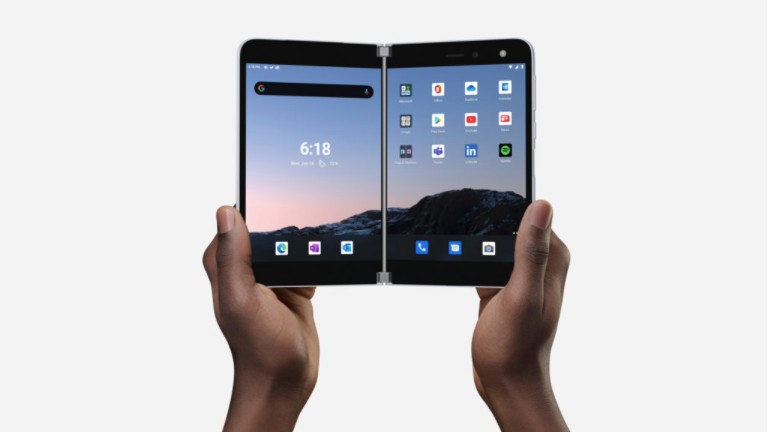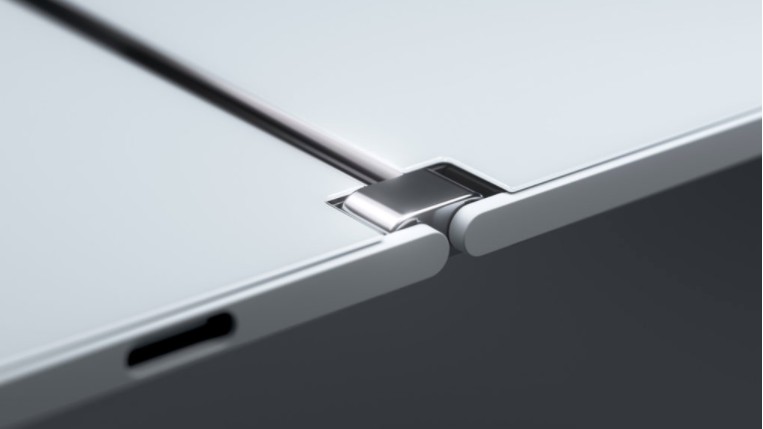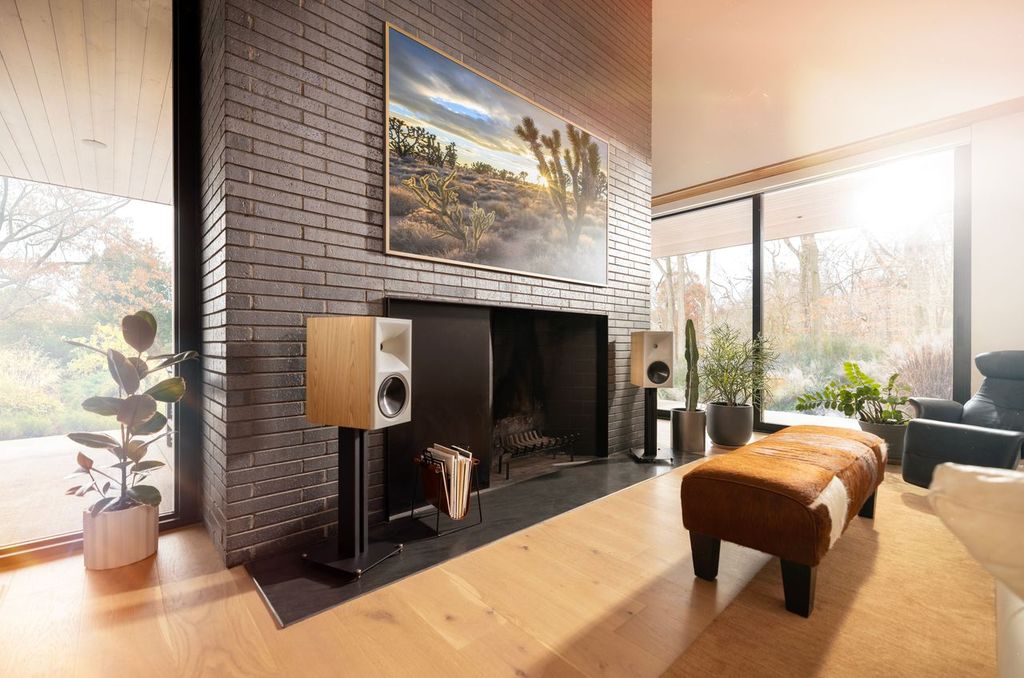Surface Duo is Microsoft's first Android phone: foldable, dual screen, super-thin
View an app per screen, or use the 360° hinge to fold one away

On the market for a new Android phone but not sure the whether the Samsung Galaxy Note 20 is the right fit? Microsoft is getting back into the smartphone business: pre-orders for Microsoft's first ever Android smartphone are now open if you live in the US, and it's an interesting proposition.
The headline-grabber is a fully foldable design, which opens out into the thinnest mobile device on the market. The two PixelSense Fusion AMOLED Displays unfold to create one, expansive 8.1-in screen that's just 4.8mm thick. The device's 'Dynamic 360-degree' hinge means one can fold back behind the other too, allowing you to use each 5.8-in AMOLED screen individually should you wish.
Where foldable phones such as the Samsung Galaxy Z Flip and Huawei Mate X feature one flexible screen that folds up, Microsoft’s device uses a dual screen design. Sadly though, unlike the above models, Microsoft's newest offering doesn't offer 5G connectivity, despite being launched remarkably close to the upcoming release of the 5G iPhone 12.
Surface Duo is clearly built with productivity and multi-tasking in mind. With it, Microsoft says you can join a Microsoft Teams meeting and see participants on one screen while you present your PowerPoint slides on another, or watch a movie while simultaneously scrolling through your text threads. Or, you could read a Kindle book like an actual book. You can drag and drop between screens, use it in Compose mode to quickly respond to an email, or tilt it into portrait for a more immersive way to scroll through web pages or photos.

Microsoft says it built Surface Duo to give users a Microsoft 365 mobile experience with every Android app in the Google Play store, and a seamless cross-device experience with your Windows 10 PC. Apps including Office, Outlook, Teams, Edge, OneNote, OneDrive and Microsoft To Do have been optimised for the new device.
Microsoft boasts new manufacturing processes to actively align pixels across the Surface Duo's screens too: proprietary digitiser algorithms consider when you are crossing the seam with your finger, promising to make it feel like it’s one fluid screen. There's a new Surface Slim Pen, sold separately, to enhance the Surface Duo experience, and you could always pair it with the odd-looking new true wireless Surface Earbuds.

Ready for some cold hard specs? The 3577mAh dual battery means you should get up to 15.5 hours of video playback or up to 27 hours of talk time before needing to charge it with the supplied 18W, USB-C charger.
The latest hi-fi, home cinema and tech news, reviews, buying advice and deals, direct to your inbox.
The 11MP adaptive camera with AI for front and rear means low-light & HDR multi-frame photo capture, dynamic range scene detection, super resolution zoom (and super zoom up to 7x), 4K video recording at 30 fps and 60 fps and Microsoft Teams and Skype video conferencing up to 1080p at 30fps.
Surface Duo runs on the Qualcomm Snapdragon 855 processor optimised for dual screen. There's Bluetooth 5.0, Qualcomm aptX Adaptive and the device is available with either 128GB or 256GB of internal storage and 6GB RAM.
Surface Duo is available for preorder in the US through Microsoft, AT&T and BestBuy, costing $1400 (around £1070, AU$1950) for the 128GB model, or $1500 (approx. £1144, AU$2090) for the 256GB variant. It will be available in store and online beginning 10th September.
Surface Duo will work on AT&T, T-Mobile and Verizon Wireless networks. At present, there's no news on when (if ever) Microsoft will launch the Surface Duo worldwide, but we'll be letting you know if that changes.
MORE:
Becky has been a full-time staff writer at What Hi-Fi? since March 2019. Prior to gaining her MA in Journalism in 2018, she freelanced as an arts critic alongside a 20-year career as a professional dancer and aerialist – any love of dance is of course tethered to a love of music. Becky has previously contributed to Stuff, FourFourTwo, This is Cabaret and The Stage. When not writing, she dances, spins in the air, drinks coffee, watches football or surfs in Cornwall with her other half – a football writer whose talent knows no bounds.
